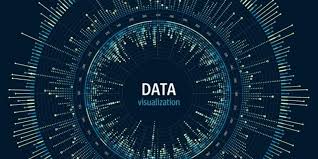Hello!
AI is a priority for governments and businesses worldwide. Poor data quality is a key aspect of AI that has been overlooked.
 AI algorithms are based on reliable data in order to produce optimal results. However, if the data is incomplete, incorrect, or not sufficient, it can have devastating consequences.
AI algorithms are based on reliable data in order to produce optimal results. However, if the data is incomplete, incorrect, or not sufficient, it can have devastating consequences.
Poor data quality can result in adverse outcomes for AI systems that identify patients’ diseases. These systems can produce inaccurate diagnoses and predictions, which can lead to misdiagnosis and delayed treatment. A University of Cambridge study of more than 400 tools for diagnosing Covid-19 showed that AI-generated reports were completely ineffective due to flawed data.
This means that your AI projects will suffer real-world consequences if the data you have isn’t sufficient.
What does “Good Enough Data” Mean?
 There is much debate about what “good enough” data really means. Some argue that there isn’t enough data. Some argue that good enough data is not necessary. HBR states analysis paralysis can be caused by poor data. Machine Learning Tools are useless if you have terrible information.
There is much debate about what “good enough” data really means. Some argue that there isn’t enough data. Some argue that good enough data is not necessary. HBR states analysis paralysis can be caused by poor data. Machine Learning Tools are useless if you have terrible information.
WinPure defines good enough data as valid, complete, and accurate data that can confidently be used for business processes with acceptable risk.
Many companies have more problems with data governance and quality than they realize. To add to the tension, they are under tremendous pressure to implement AI initiatives in order to remain competitive. This means that problems such as dirty data are not discussed in boardrooms until they cause a project failure.
What does Poor Data Mean for AI Systems?
 When the algorithm uses training data to learn patterns, data quality issues can arise. Unfiltered social media data can lead to abuses, racist remarks, and misogynist comments by an AI algorithm, such as Microsoft’s AIbot. AI’s inability detects dark-skinned people were recently attributed to partial data.
When the algorithm uses training data to learn patterns, data quality issues can arise. Unfiltered social media data can lead to abuses, racist remarks, and misogynist comments by an AI algorithm, such as Microsoft’s AIbot. AI’s inability detects dark-skinned people were recently attributed to partial data.
What does this have to do with data quality?
Poor outcomes can be caused by poor data governance, lack of quality awareness, and isolated views of data (where there may have been a gender disparity).
What To Do?
Businesses panic when they realize that their data quality is poor and start to look for solutions. Blindly hiring engineers, analysts, and consultants to fix data quality problems is a common practice. The problem isn’t going away, even though the company has spent millions to hire the right people. It is not helpful to try and solve a data quality issue by jumping to conclusions.
The grass root level is where real change begins.
These are the three most important steps you need to take if your AI/ML project is to move in a positive direction.
Recognizing and Raising Awareness About Data Quality Issues
 To begin, you must evaluate the quality and proficiency of your data. Bill Schmarzo is a prominent voice in the industry and recommends design thinking for creating a culture that everyone understands and can help with an organization’s data goals.
To begin, you must evaluate the quality and proficiency of your data. Bill Schmarzo is a prominent voice in the industry and recommends design thinking for creating a culture that everyone understands and can help with an organization’s data goals.
Data quality and data management are no longer solely the responsibility of IT teams or IT departments in today’s business environment. Data quality and data corruption are issues that business users need to be aware of.
The first thing you need to do is to make data quality training an organizational effort, and empower teams to identify poor data attributes.
This checklist can be used to start a conversation about the quality of your data.
Plan A Strategy to Meet Quality Metrics
Many businesses make the error of undermining quality issues in data. Instead of focusing on strategy and planning, they hire data analysts to clean up the data. Many businesses use data management software to clean, de-dupe, and merge data without having a plan. It is not possible to solve problems with just tools and talents. A strategy would be helpful to ensure data quality.
 Data collection, labeling, processing, and whether the data is compatible with the AI/ML project must all be addressed in the strategy. If an AI program selects only male candidates for a technical role, then it is obvious that the data used to train them was incomplete, biased, and inaccurate. This data was not relevant to the AI project’s true purpose.
Data collection, labeling, processing, and whether the data is compatible with the AI/ML project must all be addressed in the strategy. If an AI program selects only male candidates for a technical role, then it is obvious that the data used to train them was incomplete, biased, and inaccurate. This data was not relevant to the AI project’s true purpose.
Data quality is more than just the simple tasks of cleaning up and fixing. It is important to establish governance standards and data integrity before you start a project. This prevents your project from going bankrupt later.
Also read:
- Top 5 Reasons Your Own Website is Killing Your Sales
- Top Merits of Having an Emergency Kit
- A Corporate Blog for all your Marketing Needs
Setting Accountability and Asking The Right Questions
There are no universal standards that define ‘good enough data’ or data quality. It all depends on the information management system of your business, the guidelines for data governance (or lack thereof), and the knowledge and goals of your team, among other factors:
B efore you kickstart the project, here are some questions that you can ask your team:
efore you kickstart the project, here are some questions that you can ask your team:
- What is the source of the information?
- What are the issues that affect data collection and could impact positive outcomes?
- What data does the data provide? Are the data in compliance with data quality standards?
- Do designated individuals know the importance of data quality?
- What are the roles and responsibilities? Who is responsible for data cleanup? Who is responsible for master records creation?
- Are the data appropriate for their purpose?
 Ask the right questions and assign the right roles. Help your team tackle problems before they become serious!
Ask the right questions and assign the right roles. Help your team tackle problems before they become serious!
To Conclude
Data quality doesn’t mean fixing typos and errors. It makes sure that AI systems don’t discriminate, mislead, or are inaccurate. It is important to identify and fix data quality issues before you launch an AI project. To connect all teams to the ultimate goal, create an organization-wide program for data literacy.
Thank you!
Join us on social networks!
See you!






